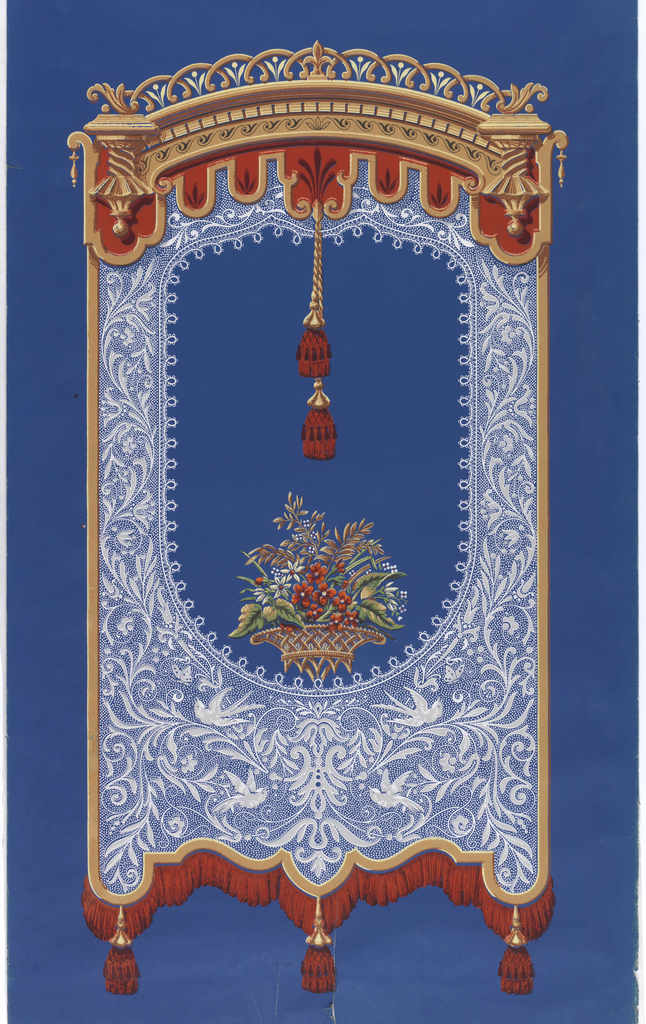Window shades and curtain papers are one of the lesser known collecting areas of the Wallcoverings Department. This shade depicting a lace panel suspended from a carved wood cornice is a beautiful example of late-19th century window shades. The shade in printed on a heavy paper that has a chalky blue ground color applied to both sides making it very opaque. Judging by the examples contained in the Cooper-Hewitt collection window shades in this period were predominantly of two types: designs that filled the shade as this one does, and designs that only filled the bottom portion of the shade, frequently a border or trim pattern running across the width at the bottom edge. All of the shades in the Museum’s collection are printed on deep blue, a deep green or a brown ground color. Some of the designs are printed on canvas and were known as Holland shades. This design fills the available space that would be visible in a window with a simulated lace pattern. The lace pattern is delicately rendered and one of the most convincing I have seen in machine-printed papers. The wood cornice, tassels and bullion fringe are also rendered with highlights and shadows suggesting depth. The basket of flowers follows an earlier tradition of centering medallions or landscape scenes in the center of the shade.
The shades were printed on continuous rolls of paper similar to the manufacture of wallpaper, with a printed black line and pattern number denoting where the individual shade was to be cut. These would have been used on spring rollers
The first shades to appear in windows are purported to have been in Holland in the 17th century, gaining wider use during the 18th century. These early shades were mounted to the window frames and needed to be rolled up manually and tied off with string. The first spring rollers were introduced by a New York factory in 1858. 1
1http://www.hausershade.com/about-us/a-brief-history-on-the-origins-of-window-roller-shades/

One thought on “Window Shade”
Greg Herringshaw on April 27, 2015 at 9:09 am
The Cooper Hewitt collection contains both paper and linen or Holland roller shades. Curtain papers are another form of window covering, like curtains made of paper. The paper is embossed much like contemporary paper towels probably to facilitate draping. The papers are large panels that would be hung like regular draperies, also has a valence and tie-backs.